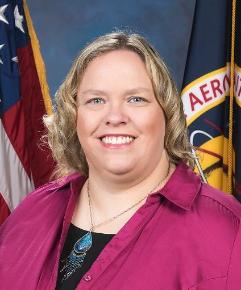Community Blogs
Community Blogs
Discover how the GLOBE community is engaging in all things GLOBE through the community blog posts below.
Learn how to create a GLOBE community blog post.
Filter By:
Blogs List
In this initial
phase after the program’s reactivation, GLOBE-Chad had paid a visit
to Mr. Nediglembaye Etienne, the director of Saint Benoit
school on June 30th, 2024.
This work meeting’s
goal was to introduce the GLOBE program to the school authorities
and present our activities in perspective.
After long
discussions of questions and answers, the school’s director
expressed his full support to the GLOBE program’s agenda that is
already in ligne with the school’s academic science initiatives.
While the bilingual school is still ...
Read More »
Posted in:
Primary Audience:
ALUMNI
COUNTRY COORDINATORS
PARTNERS
SCIENTISTS
STUDENTS
TEACHERS
TRAINERS
Following the reactivation of the GLOBE
program and loaded with a full agenda, GLOBE-CHAD meets with Royal
Academy, one of the pilot schools chosen to quick off the program for
the 2024 - 2025 school year.
The one hour meeting was held in the
office of the school director, Mr Ouambi Serge , who graciously
welcomed the GLOBE team composed of the Country Coordinator, the
Country Coordinator’s Assistant in charge of outreach and the
Assistant in charge of communication.
The points of discussion included the
strategies of implementing the GLOBE program in the educational ...
Posted in:
Primary Audience:
ALUMNI
COUNTRY COORDINATORS
PARTNERS
SCIENTISTS
STUDENTS
TEACHERS
TRAINERS
Background
I received my formal training on GLOBE Atmosphere protocols, particularly cloud observation, in the summer of 2011. In 2016, the GLOBE Program launched the GLOBE Observer (GO) app, designed for volunteer science. The GO app is more user-friendly and focuses on specific observations anyone with a smartphone can make.
The GLOBE Program is structured and education-focused, targeting students and educators, while the GO app is intuitive and accessible to the general public. Both contribute valuable data to the scientific community and enhance public understanding of ...
Posted in:
Curriculum:
SCIENCE AND MATH
TECHNOLOGY
STEM
GLOBE Mission Earth News:
TEACHER STORIES
PROFESSIONAL DEVELOPMENT
STUDENT RESEARCH & ACTIVITIES
GENERAL ACTIVITIES
GLOBE Science Topics:
BACKYARD SCIENCE
CLIMATE
GENERAL SCIENCE
GLOBE PROTOCOLS
EARTH AS A SYSTEM
SCIENTIST SKILLS
Investigation Areas:
ATMOSPHERE
CLOUDS
EARTH AS A SYSTEM
Learning Activities:
ATMOSPHERE AND CLIMATE
EARTH AS A SYSTEM
OBSERVING, DESCRIBING, AND IDENTIFYING CLOUDS
ESTIMATING CLOUD COVER
OBSERVING VISIBILITY AND SKY COLOR
CLOUD WATCH
LEARNING TO USE VISUALIZATIONS
CLOUD FUN
CLOUDSCAPE
TO SPREAD OR NOT TO SPREAD
WE'RE ALL CONNECTED: EARTH SYSTEM INTERACTIONS
RESEARCH: INQUIRE & DISCOVER
DATA COLLECTION: OBSERVE & MEASURE
DATA EXPLORATION: ANALYZE & CHART
SIMULATIONS: PLAY & LEARN
OUTDOOR: EXPLORE & CONNECT
News Topics:
TRAINING
NEWS BRIEFS
TEACHER STORIES
PROFESSIONAL DEVELOPMENT
GENERAL ACTIVITIES
Primary Audience:
ALUMNI
COUNTRY COORDINATORS
PARTNERS
SCIENTISTS
STUDENTS
TEACHERS
TRAINERS
Teacher's Guide:
GRADE LEVELS
MISCELLANEOUS
PROTOCOL INSTRUCTIONS
INTRODUCTION
ATMOSPHERE
SUPPORTING CLOUDS
EARTH AS A SYSTEM
The GLOBE Clouds team is delighted to announce this new section that showcases sky and cloud photographs from around the world! We’ve also been receiving some amazing questions from students.
The featured question was asked by students from Corpus Christi Catholic School :
Question: Why can we see clouds but not evaporation?
Answer: Water vapor is invisible. However, the water in clouds is in liquid or solid state, not gas.
Do you have a favorite cloud photo or a question for the team? Use the linked form to cast your vote and ask us any question ...
Posted in:
Curriculum:
STEM
GLOBE Science Topics:
BACKYARD SCIENCE
CLIMATE
CLIMATE CHANGE
GENERAL SCIENCE
GENERAL SCIENCE @ES
EARTH AS A SYSTEM
EARTH SYSTEM SCIENCE
Investigation Areas:
ATMOSPHERE
EARTH AS A SYSTEM
News Topics:
NEWS BRIEFS
Primary Audience:
ALUMNI
COUNTRY COORDINATORS
PARTNERS
SCIENTISTS
STUDENTS
TEACHERS
TRAINERS
Waleska works with in-service teachers in the teacher training programs of the Galileo University and the University of San Carlos of Guatemala. She is the founder and coordinator of the STEAM program
Question: Where are you from?
Answer: I was born in the city of the eternal Spring, Guatemala City, in Central America, several eclipses, comets, and moons ago.
Question: What inspired you to work in this field?
Answer: Since I was little I had a fascination with natural phenomena, the reason why stars shine led me to be a Physicist, and fireflies and ...
Posted in:
Curriculum:
STEM
GLOBE Science Topics:
BACKYARD SCIENCE
CLIMATE
CLIMATE CHANGE
DATA INCLUDED
GENERAL SCIENCE
GENERAL SCIENCE @ES
SCIENTIST SKILLS
Investigation Areas:
ATMOSPHERE
EARTH AS A SYSTEM
Primary Audience:
ALUMNI
COUNTRY COORDINATORS
PARTNERS
SCIENTISTS
STUDENTS
TEACHERS
TRAINERS
Brad Hegyi is a research scientist for the NASA Prediction of Worldwide Energy Resources (POWER) project team at Langley Research Center in Hampton, Virginia, USA. Brad develops metrics and statistics for POWER from model estimates of future climate to help support planning for future energy use by heating and cooling systems in buildings. Brad also helps create interactive data products to better visualize changes occurring in the climate data.
The energy that comes from the Sun is the basic source of energy for everything on Earth. Solar energy drives Earth’s weather and ...
Posted in:
Curriculum:
TECHNOLOGY
STEM
GLOBE Science Topics:
BACKYARD SCIENCE
CLIMATE
CLIMATE CHANGE
DATA INCLUDED
GENERAL SCIENCE
EARTH AS A SYSTEM
EARTH SYSTEM SCIENCE
SCIENTIST SKILLS
Investigation Areas:
ATMOSPHERE
EARTH AS A SYSTEM
Primary Audience:
ALUMNI
COUNTRY COORDINATORS
PARTNERS
SCIENTISTS
STUDENTS
TEACHERS
TRAINERS
On April 8, 2024 many of us in North America will have the opportunity to experience a solar eclipse. Whether you’re in the path of totality, or will be experiencing a partial eclipse, it’s sure to be all the buzz. This is a great opportunity to turn the excitement about the solar eclipse into curiosity about other fields of science.
During the eclipse, as the moon comes between us and the Sun, we will experience a sudden change in the amount of Sun’s energy reaching our surface. This can cause changes in our atmosphere including changes in air temperature, surface temperature, clouds, ...
Posted in:
Investigation Areas:
ATMOSPHERE
EARTH AS A SYSTEM
News Topics:
IOPS
Primary Audience:
PARTNERS
TEACHERS
TRAINERS
Student Research Reports:
STANDARD RESEARCH REPORT
INTERNATIONAL VIRTUAL SCIENCE SYMPOSIUM REPORT
U.S. STUDENT RESEARCH SYMPOSIA (SRS)
MISSION EARTH REPORT
Energy from the Sun warms our planet, and changes in sunlight can also cause changes in temperature, clouds, and wind. Clouds are ever changing and give you clues and information on what is happening in the atmosphere. Eclipses provide a natural experiment, in which the Sun’s light is blocked from Earth for a brief period in time, allowing us to observe the effects of that sudden change. Read the newly released blog post explaining in depth cloud formation and which ones would be impacted by the upcoming total solar eclipse over North America and how the data will be used. ...
Posted in:
Curriculum:
STEM
GLOBE Science Topics:
BACKYARD SCIENCE
CLIMATE
CLIMATE CHANGE
GLOBE PROTOCOLS
EARTH AS A SYSTEM
Investigation Areas:
ATMOSPHERE
CLOUDS
EARTH AS A SYSTEM
Primary Audience:
ALUMNI
COUNTRY COORDINATORS
PARTNERS
SCIENTISTS
STUDENTS
TEACHERS
TRAINERS
A new resource is now available created by GLOBE educator Mr. Roger Rose ( @rrose ) as part of his NASA internship in 2023 titled, GLOBE Atmosphere Clouds and NGSS . This document compares portions of the clouds protocol to Next Generation Science Standards (NGSS) for elementary and middle school with tips and resources to use in the classroom.
The document is available on the resources section of the NASA GLOBE Clouds page.
Posted in:
Curriculum:
SCIENCE AND MATH
STEM
GLOBE Science Topics:
BACKYARD SCIENCE
CLIMATE
GLOBE PROTOCOLS
SCIENTIST SKILLS
Investigation Areas:
ATMOSPHERE
Primary Audience:
COUNTRY COORDINATORS
PARTNERS
TEACHERS
TRAINERS









